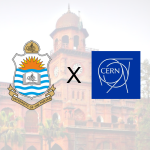If something is nothing, is it truly nothing? Prepare your mind to be boggled because you will need to know many things to understand absolutely nothing.
Nothing – a word so casually used without acknowledging the profound physics behind it. Can one visualize the characteristics of nothing? There is an eight-year-old YouTube video titled: “10 hours of nothing.” It basically contains 10 hours of a black screen; and apparently, more than 4.3 million viewers thought to themselves, “now that is called quality content” as they clicked on the video (myself included). This raises a question, do we usually refer to pitch-black darkness as ‘nothing’?
nothing
/ˈnʌθɪŋ/
pronoun
1. not anything; no single thing
(Definition of nothing from oxford dictionary.)
What is inside an empty bottle?
There is air; about septillion (1025) air molecules per cubic meter hence the bottle is not actually empty. The literal meaning of ‘nothing’ is defined as the absence of everything that exists. So, even though the naked eye cannot capture the molecules, it does not deduce that the molecules are not there, to begin with.

We can try to create a vacuum and remove the molecules present in the bottle but sucking all the air out will be a waste of time since it is impossible to achieve the perfect vacuum with common laboratory apparatuses. On that account, let’s head to Switzerland and pay a visit to the finest vacuum we have in the interplanetary space – The Large Hadron Collider at CERN.

The image shows the world’s biggest and most powerful particle accelerator located at CERN. Note that despite being the best man-made vacuum, it still contains molecules.
Alright, now that we have got our hands on the closest vacuum to exist in our Solar System, have we finally obtained nothing? Well, we have descended from a septillion molecules down to a million molecules per cubic meter. Although we successfully got rid of 19 zeros, there are still six to go.
The solar system prevents us from removing every single molecule, so, suit up and bid farewell to planet Earth as it is time to depart to an intergalactic space in search of nothing.
Between the galaxies, there are 500,000 particles per cubic meter. To make this long tiresome journey worth it, let us believe for a second that we somehow managed to remove all half a million particles, but just when you think you have solved the physics of it, quantum welcomes itself to the spotlight. Quantum particles are continuously coming in and out of existence in that particular location. We have something then boom, particles collide, expire and we have nothing. This process repeatedly occurs in a short period.
Moreover, the absence of particles certainly does not lead to the expulsion of everything present at a specific point. The laws of physics are still applicable in that particular area; space, time, dark matter, energy and so much more remain in our so-called ‘nothing.’

For the sake of fulfilling the definition of nothing, let’s respectfully dump 330+ years of Newtonian and Einsteinian physics. Before proclaiming that this is an unrealistic approach, recall that we are attempting these scenes while levitating in the intergalactic universe. Following that, we have supposedly extracted all particles, laws, and everything scientists discovered from our system to achieve a 100% vacuum.
After touring CERN, leaving the planet, Milky Way, traveling light-years away, and eliminating all principles that came in our path, have we ultimately conquered nothing? Perhaps. This pleasurable explanation of nothing is an extreme and philosophical scenario rather than a scientific one mainly because empty space, breaking all regulations of physics is just a mere assumption. So the next time someone says, “Nothing is impossible”- they might be right!

If you are a student, we recommend you check out these free resources!
![]()

Sarah Arif is pursuing her Bachelor’s degree in Mechatronics Engineering. Her keenness to share acquired knowledge has led her to publish articles for Pakscience & Scientia. Additionally, she believes in diversifying her experiences for personal & professional growth.




